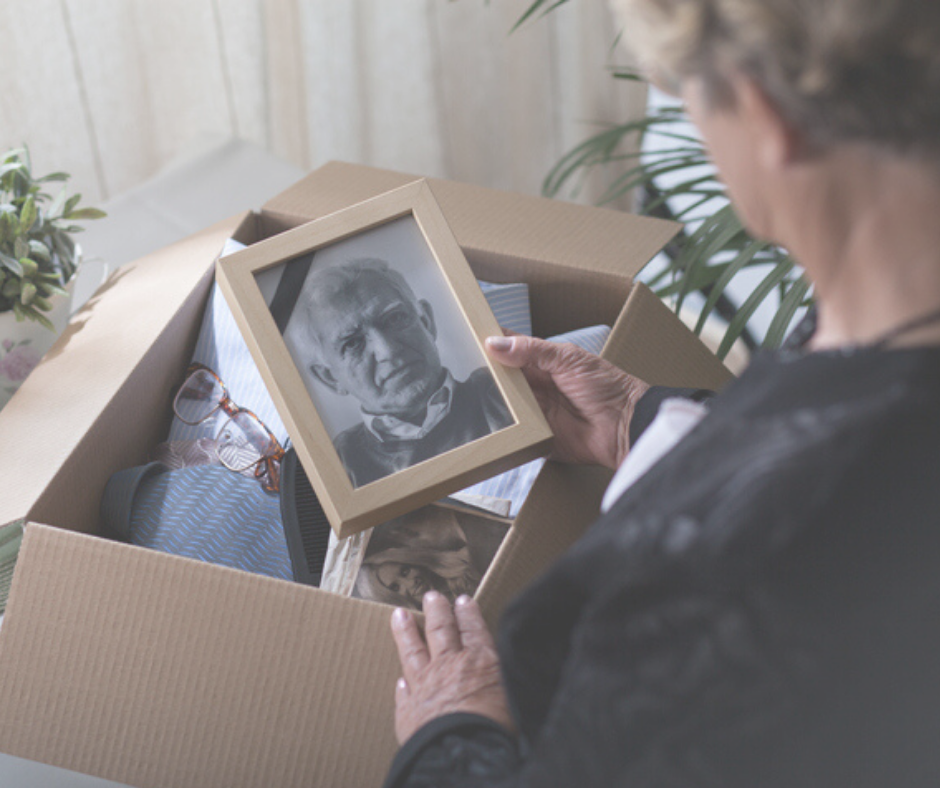For the past two weeks, we have shared how to spring clean your home and how to organize your closets. It’s true that these tasks can seem very basic and easy to do. Just grab a bucket, take stuff out. Clean. Put stuff back. But it really isn’t that easy when you need to let go of things you no longer need, use or want that have a lot of emotions or memories attached.
We come across this in every single project we complete with a client. There is always one room, one box, one item that is just too hard to let go, despite knowing that it’s time to let it go. The emotional piece of letting go far outweighs the logical side that clearly states it’s time.
But it really is not that easy. Letting go is not a logical task when you or a loved one are part of the story.
So what do you do? What do you do with a room-filled with memories from a loved one who has passed, moved away or is no longer a part of your life? Or the box of your child’s cutest and most touching elementary school crafts? Or the expensive dress that no longer fits you because you are no longer that size but hope to be one day? These are real experiences that we all go through and despite what logic says, emotions and feelings are what is ruling the experience.
Here is what we did while working with two sisters who were moving in together after one was going through a divorce and the other needed to downsize.
While we were emptying the garage that was filled with items from their parents, and the usual gardening tools, sporting equipment and unused furniture, we came across a four-door, yellow, metal filing cabinet. The filing cabinet was a normal every-day filing cabinet. It was empty and neither of the sisters had room in their floor plan to keep it, but they both felt the other should keep it. It became a bit of an argument before I stepped in to ask about the story behind the filing cabinet.
“It belongs to Dad”, they both said. “And Dad died two years ago.”
I could see the pain in their eyes as they looked at me, then each other, and then the filing cabinet.
And there it was. The reason they didn’t want to let it go. For them, the filing cabinet represented their father and the many memories they had of him.
I quickly thought of a way they could honour their dad, the memories they had of him, while also letting go of the filing cabinet by donating it.
“What if I took a picture of the filing cabinet and framed it for each of you to put on your desks? Then you could still see the filing cabinet every day, remember your dad, and you wouldn’t need to keep the filing cabinet. We’ll donate it to someone who can use it and will love to have it.”
They looked at each other, sighed with relief and it was done. No guilt. No shame. Just an understanding that it was okay to let it go and move forward.
I took a photo, framed it and they each got a picture of the filing cabinet to put on their desks.
When you come across items that are too hard to let go of, here is what we suggest:
1. Honour the story, your feelings and why you are hesitating and holding on.
Someone else who has no history or attachment to the item(s) can easily walk into the room and say, “Why are you keeping that? Let that go!” As with the filing cabinet, I could have easily shook my head and said, “It’s just a filing cabinet.” But to them it was not. And they were torn. They wanted to keep it because it had emotional currency and their hearts were heavy with the thought of letting it go.
Instead of feeling guilt, shame or frustration, allow yourself to feel what you are feeling. Be compassionate with yourself and others. Now is not the time to push your feelings aside and bury them by keeping the item until you can let it go. Instead, honour the story, the memory, the reason you feel the need to keep the item.
When you do that, you allow yourself an honest experience about what is keeping you from letting it go. By honouring those feelings and reasons, you can then move to the next phase of letting go. So be gentle on yourself. Honour your feelings, the story and the history of the item. It’s okay to do that.
2. Ask yourself how you can keep the memory or its story but not keep the item.
As with the two sisters, forcing them to let it go would not have been ideal. In fact, you should never get rid of items that belong to others without giving them the opportunity to go through the letting go experience. You could cause more harm than good, especially when you are dealing with someone who can make decisions on their own and they would be quite hurt if you took away an item they didn’t let go themselves.
With the sisters, I gave them the space to honour the story and their feelings, and then I suggested a viable way they could keep the memory without the filing cabinet. And for them that worked. For you, you may need other ideas and suggestions and to help with that. Here are some additional articles that may provide a solution that works for you:
“How to Get Rid of Sentimental Clutter”
“How to Repurpose Sentimental Items You Just Can’t Throw Away”
“How to Store, Repurpose and Display Sentimental Items”
3. Give yourself permission to let it go.
How often have you thought that you should keep an item because others would want you to keep it? You hear their voice in your head and you let yourself be guided by their voice and not your own.
As with the two sisters, they each wanted the other to keep the filing cabinet. They were no longer listening to their own voice, they were listening to a voice that made them feel that it would be wrong to let go of the filing cabinet. They knew they couldn’t keep it but instead of honouring that voice, they were listening to a voice that made them feel that letting it go would be wrong.
So, I gave them the opportunity to give themselves and each other permission to let it go. With a solution that worked for them, they could now move to a place of it being okay to donate the filing cabinet and honouring their father with a photograph of the filing cabinet.
For you, once you have made the decision to honour the item and let it go, give yourself permission to do just that and feel good about your decision. You are not doing it to hurt anyone’s feelings. You are not doing it out of obligation either. You are doing it so you can be free of the clutter and the weight it has on you.
Letting go of sentimental items is not easy. But you can do it. Honour how you feel. Find a way to honour the story, the history and the memory and give yourself permission to let the item go.
If you run into a problem or just know you can’t do this alone, reach out to us. This is what we do on a daily basis with clients. We help them to feel good about donating, gifting, repurposing their items so that they can move forward. We’d love to help you or your loved ones do the same.

